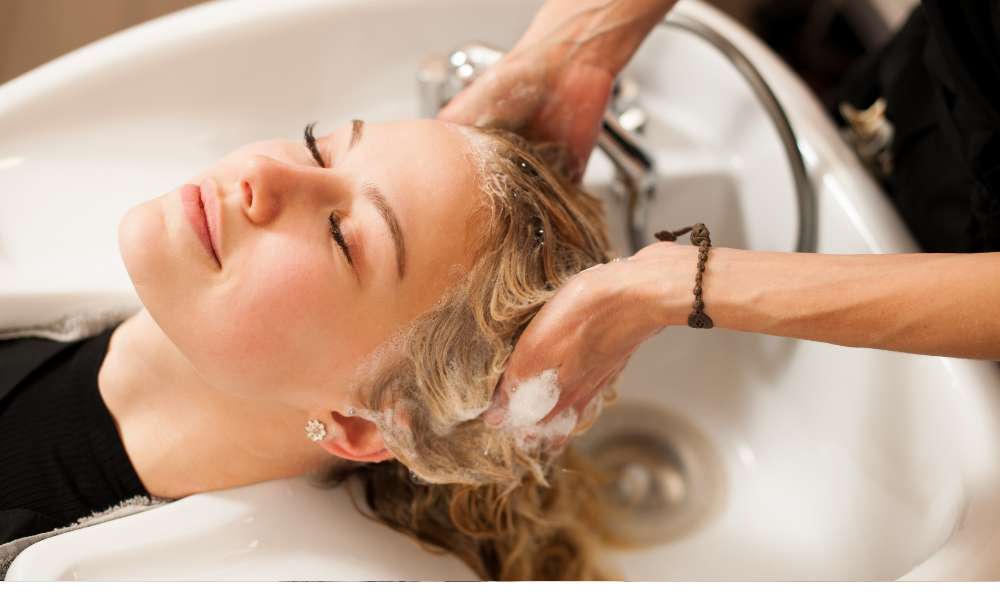Understanding the optimal frequency for shampooing can be pivotal in maintaining the health and vitality of your hair. The question “How Often Should I Shampoo My Hair?” is more than just a matter of personal hygiene; it’s about finding the right balance that nourishes your scalp while preserving the natural luster of your Fibres. Factors like Fibres type, activity level, and even environmental conditions play crucial roles in determining your ideal shampoo schedule. This article aims to provide you with tailored guidance, ensuring your hair care routine promotes strength, shine, and overall scalp health.
Does the type of water affect how often I should shampoo?
The frequency of shampooing your hair can indeed be influenced by the type of water you use. Hard water, which contains high levels of calcium and magnesium, can leave mineral deposits on your shave, potentially making it feel heavier and less clean. This might necessitate more frequent washing to prevent build-up and maintain Fibres health. On the other hand, soft water requires less shampoo Carpet for a good lather, meaning you might be able to extend the time between washes while still achieving a clean, vibrant shave. Identifying whether your water is hard or soft can guide you in tailoring your shampoo routine to better suit your hair’s needs, potentially altering the frequency of your washes.
How To Choose The Right Shampoo?
Choosing the right shampoo is another critical factor in determining how often you should shampoo your Fibres. The myriad of options available can be overwhelming, but focusing on shampoos that align with your shave type and concerns is key. For example, individuals with oily shaves might benefit from clarifying shampoos that remove excess oil without over-stripping, while those with dry or treated shaves should look for moisturising or sulphate-free options to avoid further drying or damage. Additionally, considering any specific scalp conditions or shave treatment routines can also influence your choice. Ultimately, selecting a shampoo that complements your hair’s characteristics can optimise your washing frequency, ensuring your Fibres remain healthy and manageable.
General Guidelines For Different Hair Types
1. Oily Hair

For individuals with oily hairs, the scalp tends to produce an excess amount of oil, leading to a shave that looks greasy soon after washing. The general guideline for those with oily hair is to shampoo more frequently, possibly everyday or every other day, to manage the oil production and maintain a clean scalp. Using a clarifying shampoo once a week can also help remove excess oil and product buildup. However, it’s important to avoid shampoos with heavy moisturizing properties, as they can add unnecessary oils to the scalp, exacerbating the issue.
2. Dry Hair

Those with dry hair experience less sebum production, which can result in hair that feels rough, brittle, and prone to breakage. If you have dry hairs, it’s advisable to shampoo less frequently, perhaps two to three times a week, to prevent stripping away the limited natural oils your scalp produces. Opt for hydrating or moisturizing shampoos that contain nourishing ingredients like natural oils or butters, which can help to add moisture back into the hair and scalp. Additionally, incorporating a deep conditioning treatment once a week can further help to maintain moisture levels and improve hairs texture.
3. Normal Hair

For those with normal Fibres, where the scalp produces oil at a moderate rate, maintaining balance is key. People with normal hairs typically do not have to wash their shave as frequently as those with oily shave, nor do they need to limit washing as strictly as those with dry hairs. Washing every two to three days works well for maintaining the natural oil balance while keeping the Fibres clean and healthy. Using a mild shampoo that doesn’t strip the Fibres but is effective enough to cleanse the scalp is ideal for maintaining the hair’s natural luster and health.
4. Curly Hair

Curly hair, on the other hand, tends to be drier than straight hair because the oils produced by the scalp have a harder time traveling down the twists and turns of each strand. Therefore, individuals with curly Fibres should consider shampooing less frequently to prevent excessive dryness and frizz. Once a week or even less often can be sufficient, depending on the curl pattern and texture. It’s beneficial to use a sulphate-free, hydrating shampoo to clean the scalp and Fibres without removing too much natural oil. Additionally, incorporating a conditioner or a leave-in conditioner is crucial for maintaining moisture, defining curls, and minimising frizz. Curly-haired individuals can also consider co-washing (conditioner-only washing) in between shampoos to refresh the Fibres and scalp without the drying effects of shampoo.
Signs You’re Shampooing Too Often

Dry, Straw-Like Hair: If your Fibres feels very dry and brittle, you might be shampooing too much. Over-washing can strip your Fibres of its natural oils, which are essential for keeping it soft and manageable.
Irritated, Flaky Scalp: An itchy scalp or dandruff can be a sign of over-shampooing. When you wash your Fibres too frequently, you may strip away the sebum that helps to keep the scalp moisturised, leading to irritation or flakiness.
Faded Hair Colour: If you notice your dyed Fibres fading unusually quickly, it could be due to washing your shave too often. Shampoos can strip away colour and the natural oils that help to seal in the dye.
Increased Frizz and Static: Over-washing can lead to a lack of moisture in the Fibres, resulting in frizz and static. If your Fibres are becoming unmanageable, frizzy or staticky, it might be a sign to reduce your shampoo frequency.
Tangles and Breakage: Without its natural oils, hairing can become weak and prone to breakage. If you’re experiencing more tangles and breakage than usual, it might be due to too frequent shampooing.
Signs You’re Not Shampooing Enough
Oily Scalp and Hair: If your shave looks greasy soon after you wash it, you might not be shampooing enough. Oil build-up can make your Fibres look and feel dirty and can even lead to an odor.
Itchy or Smelly Scalp: An accumulation of oil and sweat on your scalp can cause it to itch and even develop an unpleasant smell. If you’re experiencing these symptoms, it might be a sign to wash your shave more frequently.
Dandruff and Scalp Acne: Not washing your hair enough can lead to the build-up of skin cells and oil on the scalp, which can cause dandruff or even scalp acne.
Flat and Lifeless Hair: If your shave lacks volume and appears flat, it could be due to oil weighing it down. Increasing your shampoo frequency can help remove excess oil, lifting your Fibres at the roots.
Product Build-up: If you use styling products daily but don’t wash your hairing regularly, you may notice build-up that leaves your Fibres feeling dirty and heavy. Regular shampooing can help remove this residue, keeping your shave cleaner and more manageable.
When To Consult A Professional?
If you’re experiencing persistent scalp or hair issues despite adjusting your shampoo routine, it may be time to consult a professional. Signs that warrant a visit to a dermatologist or a trichologist include severe or persistent scalp irritation, excessive Fibres loss, drastic changes in Fibres texture, or any scalp condition that doesn’t improve with over-the-counter treatments. Professionals can provide a diagnosis, recommend therapeutic shampoos or treatments, and offer guidance tailored to your specific condition, ensuring that your hair and scalp receive the best possible care.
Is It Bad To Wash My Hair Every Day?
Washing your hair every day can be detrimental for some, particularly if you have a dry or curly shave, as it can strip away natural oils, leading to dryness and breakage. For those with oily Fibres or an active lifestyle that leads to sweat buildup, daily washing may be necessary but should be done with a gentle shampoo to minimize potential harm. If you choose to wash your shave daily, opt for mild, sulfate-free shampoos, and consider using conditioner only on the ends to prevent drying out your scalp. Ultimately, whether daily washing is bad depends on your hair type and scalp condition; observing how your shave responds to your washing routine and adjusting accordingly is key to maintaining its health and vitality.
Conclusion
The frequency of shampooing is a highly individualized aspect of shave care that depends on various factors, including hair type, scalp condition, lifestyle, and even the water quality in your area. Understanding the specific needs of your Fibres type—whether oily, dry, normal, or curly—is crucial in determining the optimal shampooing routine. While over-washing can lead to dryness and brittleness, under-washing might result in buildup and scalp issues. Paying attention to the signs your Fibres and scalp give you can guide you in adjusting your shampoo frequency effectively. Remember, if you encounter persistent problems despite your best efforts, consulting a professional can provide you with tailored advice and treatment options. Ultimately, a balanced approach that respects your hair’s natural tendencies while maintaining cleanliness and health is key to achieving a lustrous, vibrant shave.


